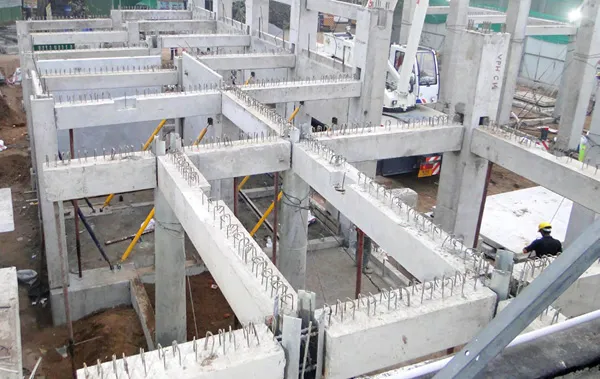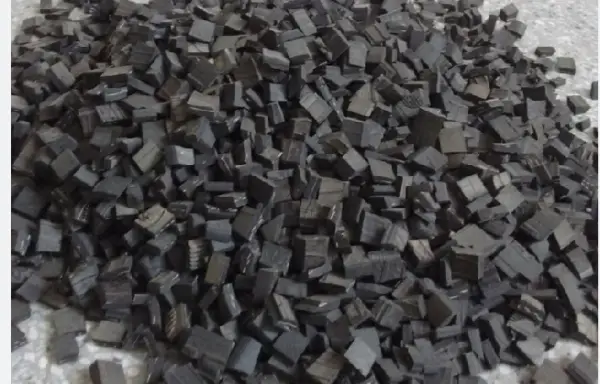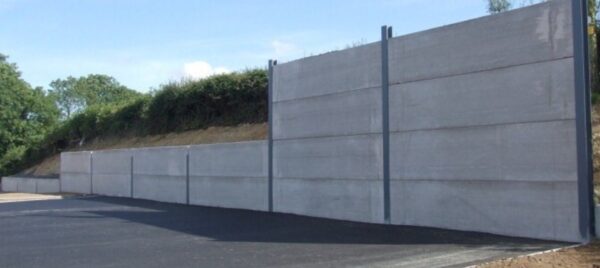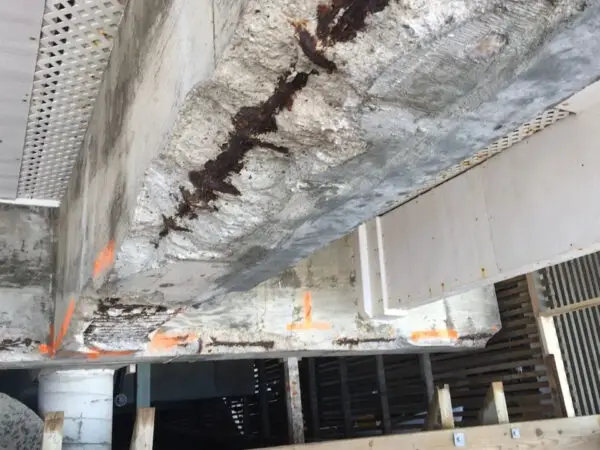Classification of aggregates plays a pivotal role in ensuring the quality and performance of construction materials. One of the most important building materials in construction and in civil engineering projects is aggregates as they form the body of the concrete when mixed with mortar or cement paste.
In civil engineering, aggregate plays a crucial role in the construction of various structures. Aggregate definition in civil engineering refers to a granular material, such as sand, gravel, crushed stone, or recycled materials, that is used as a component in composite materials like concrete and asphalt.
It acts as a binding material or a filler material in the production of final products like concrete, asphalt and other building materials. Aggregates are generally obtained from rocks which are obtained naturally or produced through industrial processes.
These aggregates are responsible for the strength, hardness, toughness, durability, shrinkage, workability etc. properties of the final product which has several applications in the construction field.
Classification of aggregates which depends on various factors such as size, shape, geological origin, and on unit weight plays a crucial role as it helps the engineers and contractors to decide the suitability for a particular project.
Aggregates are classified into different types based on different prospects. They are given below:
- Based on Geological origin
- Based on Size
- Based on Shape
- Based on unit weight
So let’s have a look at the aggregates classification in this blog.
Based on geological origin
Aggregates may be classified into two types which are
- Natural Aggregates
- Artificial Aggregates
Natural Aggregates
- These aggregates are obtained naturally from the environment.
- They are produced by crushing from quarries of igneous, sedimentary and metamorphic rocks. Gravels and sand are reduced to their present size by the natural agencies that also fall in this category.
- The mostly used aggregates are obtained from igneous rocks. They are from pits, dredged from river, creek or from sea.
Artificial Aggregates
- These aggregates are manufactured using industrial processes.
- Broken bricks, blast furnace slag and synthetic aggregates are examples of artificial aggregates.
- Broken bricks which are known as brick bats are suitable for mass concreting such as in foundation bases.
- Blast furnace slag aggregate is used for making precast concrete products.
- Synthetic aggregates are used for making lightweight concrete.

Based on size
According to size aggregates are classified into four types which are
- Coarse aggregate
- All-in-aggregate
- Graded aggregate
- Fine aggregate
a. Coarse aggregate
- Coarse aggregates are large- sized particles which are retained on 4.75mm sieve and are identified as coarse aggregates.
- They are obtained by natural disintegration or by artificial crushing of rocks. They include materials such as crushed stones, gravel, and boulders.
- The maximum size of the aggregate can be 80mm. The maximum size of aggregate should be as large as possible but not more than one -fourth of the minimum thickness of the member.
- These aggregates are used in the construction of roads, bridges and other heavy-duty structures where high strength is required.
- Aggregates which are more than 20mm are used for reinforced cement concrete structural members.

b. All-in-aggregate
- Naturally available aggregates of different fractions of fine and coarse sizes are known as all-in-aggregate.
- The deficiency of any particular fraction can be corrected for use in the mix but they are not recommended for quality concrete.

c. Graded aggregate
- Aggregates most of which passes through a particular size of sieve are known as graded aggregate.
- For example : A graded aggregate of nominal size 20mm means an aggregate most of which passes through IS sieve 20mm.

d. Fine aggregate
- These aggregates are small- sized particles that have a size less than 4.75mm.
- They may be natural sand deposited by rivers, crushed stone sand which is obtained by crushing stones and crushed gravel sand.
- They are used in the construction of concrete and lightweight structures.
- The smallest size of fine aggregate i.e. sand is 0.06mm.

Based on Shape
Aggregates can be classified as
- Rounded
- Irregular
- Angular and
- flaky.
Rounded aggregates
- They are generally obtained from river, sea-shore gravels, deserts or wind-blown sands and produce minimum voids about 32% in the concrete.
- They have a minimum ratio of surface area to the volume and the cement paste required is minimum.
- They are unsuitable for high strength concrete and pavements because of its poor interlocking capacity.

fig
Irregular aggregates
- They have voids about 36% and require more cement paste when compared to rounded aggregates.
- Due to irregularity in shape they provide good bond and are suitable for making ordinary concrete.

fig
Angular aggregates
- They have maximum voids which are about 40% which are sharp, angular and are rough particles.
- The requirement of cement paste is relatively more and they provide a very good bond than the previous two aggregates.
- They are mostly suitable for high-strength concrete and pavement.

Flaky aggregates
- Flaky aggregates generally orient in one plane with water and air voids underneath.
- They adversely affect durability and are restricted to a maximum of 15%.

Fig

Source: Concrete Technology by M.S.Shetty
One another important type of aggregates used for special cases is lightweight aggregate. Lightweight aggregates are a specialized type of aggregate that are used in the production of lightweight concrete, providing improved thermal and acoustic insulation properties.
FAQ – classification of Aggregates
What are the main types of aggregates based on their size?
Aggregates can be classified into three main types based on their size: coarse aggregates, fine aggregates, and filler materials. Coarse aggregates are those that have a nominal size of more than 4.75 mm, such as gravel, crushed stone, and blast furnace slag. Fine aggregates are those that have a nominal size of less than 4.75 mm, such as sand, silt, and clay. Filler materials are those that have a nominal size of less than 0.075 mm, such as cement, fly ash, and lime.
What are the main types of aggregates based on their shape?
Aggregates can be classified into four main types based on their shape: rounded, angular, flaky, and elongated. Rounded aggregates are those that have a smooth and spherical shape, such as river gravel and sea shells. Angular aggregates are those that have a sharp and irregular shape, such as crushed rock and broken bricks. Flaky aggregates are those that have a flat and thin shape, such as slate and mica. Elongated aggregates are those that have a long and narrow shape, such as needles and fibers.
What are the main types of aggregates based on their texture?
Aggregates can be classified into two main types based on their texture: smooth and rough. Smooth aggregates are those that have a smooth and uniform surface, such as glass beads and marble chips. Rough aggregates are those that have a rough and uneven surface, such as coral and pumice.
What are the main types of aggregates based on their mineral composition?
Aggregates can be classified into three main types based on their mineral composition: siliceous, calcareous, and argillaceous. Siliceous aggregates are those that are composed mainly of silica or quartz, such as granite, sandstone, and quartzite. Calcareous aggregates are those that are composed mainly of calcium carbonate or lime, such as limestone, dolomite, and chalk. Argillaceous aggregates are those that are composed mainly of clay or alumina, such as shale, slate, and laterite.
Based on unit weight
Aggregates are classified into three types which are depending on specific gravity and on weight. They are
- Normal – weight aggregates
- Light – weight aggregates
- Heavy – weight aggregates
Normal – weight aggregates
- It has a unit weight which ranges from 1120 kg /m3 to 1600 kg /m3.
- These aggregates are mostly used in construction materials such as concrete and asphalt.
- They are used in the construction of roads, bridges, buildings and other structures as they provide necessary strength and durability to these materials.
Light – weight aggregates
- It has a unit weight of less than 1120 kg /m3.
- They are generally used in construction of high -rise buildings , bridge decks and precast concrete products.
- They are made from materials such as shale, clay or slate.
Heavy – weight aggregates
- They have a unit weight greater than 2080 kg /m3.
- They are made from dense materials such as magnetite, barite.
- They are used in the construction of radiation shielding, counter weights, and ballasts as they require high density.

Source: Building materials by S.K.Duggal







